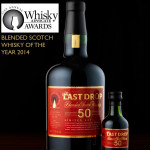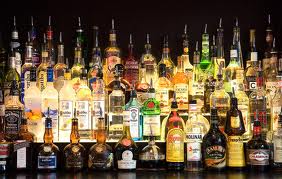Old Whisky, New Management

At the 21st Annual Whisky Advocate Awards, The Last Drop 50 Year Old Blended Scotch Whisky was awarded the highly prestigious Whisky Advocate’s Blended Whisky of the Year 2014.
It’s a remarkable product from a unique and equally remarkable company. I’ve blogged about the company a number of times but only in reference to James Espey, one of the founders. I think you’ll find the full story very interesting, particularly since the day-to-day management of The Last Drop Distillers (LDD) has been handed over to the daughters of two of the founders.
How it began
In 2008, three partners with a proven track record of producing incredible spirits brands (Johnnie Walker Blue Label, Chivas Regal 18 Year Old, The Classic Malts, Malibu and Baileys Irish Cream) decided to pool their skills to create one last amazing brand. So, James Espey, Tom Jago and Peter Fleck founded the company whose single-minded goal was to find and bottle rare and exclusive spirits.

For instance, The Last Drop 50 year old (50.9% AbV, $4,000) is based on the discovery of three overlooked casks that had been distilled between the 1940s and 1950s and sold throughout the 1970s. But somehow these casks were ignored or forgotten about until Espey and Jago came along and further aged them.
The result was twofold. The whisky was extraordinary and described by reviewers as “epic.” Further, they realized they were on to something and have produced a 1960 Scotch and a 1950 Cognac. Other last drop variants are in the works.
New management
As you can imagine, precious and rare spirits, not to mention expensive, require a full time commitment for sales and marketing. As a result, the management torch has been passed to two brilliant offspring of the founders.

Caroline (Beanie) Espey (daughter of James Espey) is Sales and Marketing Director and comes with a strong global background as well as expertise in very top shelf brands. Following a degree in modern languages at Oxford University, Beanie has worked for luxury brands Chanel and L’Oreal before starting her own business – a Marketing agency run jointly from London and Hong Kong.

Rebecca Jago (daughter of Tom Jago) is Creative Director. Following a degree in Linguistics and time with some of London’s leading design agencies, Rebecca has been running her own small design agency for the last 25 years. Somewhat unusual for a creative director inasmuch as Rebecca’s creativity extends both to design and product.
What makes The Last Drop unique?
There are many very expensive whiskies on the market selling for four, five, even six figures. (Here is an interesting list.) The scotch whiskies on the list are mainly single malts and available in either glitzy or straightforward packaging. What I love about The Last Drop products is that it is about the liquid, not the packaging. If your motivation is ostentation, then you probably gravitate toward elaborate packaging that shows your “good taste” regardless of the quality of the scotch.
Also, the list consists mainly of single malts except for Last Drop Distillers 1960 Blend and Johnnie Walker Blue 200th Anniversary Blend. While I love single malts, there is nothing like a carefully blended scotch, particularly with ancient stocks. For me, that’s the epitome of the scotch maker’s craft.
Add to that a family run business consisting of old school/new school spirits industry connoisseurs and the results are products worth buying.
Of course, that’s only as long as the stock lasts. But, if I know the Espeys and Jagos, more discoveries are on the way.





